Vinifera 2025, Trento, Italy
Exhibition of the guardians of the Alpine arc, winemakers and taste artisans
On Saturday, I was in Trento doing something highly unusual. The rainy and snowy weekend helped me return to the city from my planned wilderness excursion.
I went to a fair, which I try to avoid as much as possible as I prefer to visit producers individually rather than in a sausage factory-style event.
However, the reduced size of the event and the promise of an entire floor of non-wine exhibitors lured me in, and I was not disappointed (I would never be caught alive again ever at Vinitaly; twice in a lifetime was already too much for me).
So, I rolled up my sleeves and went to Vinifera 2025, the sixth edition of this event celebrating the guardians of the Alpine arc—winemakers, food and beverage, and craft artisans dedicated to their craft in the “breathtaking peaks and slopes of this mountain range” I love so much.
Alongside producers from Italy’s Alpine regions, stretching from Valle d’Aosta to Friuli Venezia Giulia, other small, sustainable producers from neighbouring countries such as France, Austria, Switzerland, and Slovenia, interesting for me as I am in need to learn more about high-altitude viticulture and agriculture - part of my Mountain Foodways studies.
Safe for a handful of wine-focused things I had on my agenda (more on that in a minute), I paid no attention to the extensive wine section, focusing instead on the alternative drinks and the food and craft exhibitors.
By the time (late afternoon) I stepped on the exhibit floor where all winemakers were, it was hell on wheels: groups of loud bouy and men in flock crowded every possible space, yelling wildly every time a glass dropped (which happened quite frequently). I needed to visit two producers, as I needed one bottle to bring home and say hi to a winemaking friend.
I made my way out quickly: these events were not for me. Sensory overload is a thing.
Some Hard Facts
With 25 euros, you get a tasting glass and access to the fair (they also sell a pouch, but I have tons of glass pouches from every Calici di Stelle I attended, so I skipped this one. For an additional 10 euros each, I added a masterclass on Alpine wines in the morning and one on Liguria wines in the afternoon (a region I do not know that well).
I am not your next-door Influencer who has to peddle questionable stuff as #gifted to live, and I rarely speak about what I take (Vitamin B12 by Solgar, cyanocobalamine version).
However, I found an ally to support those days or nights when I have to drink more than my average (which is zero for weeks on end). I take two capsules of Biocollabs, “something for drinking”, before any alcoholic meal/tasting, etc. It will not be a miracle, but you will not feel so heavied down by alcohol on those exceptional days of drinking. I took four throughout the day, and I didn’t feel dizzy or imbibed at any moment.
Pre-Party Masterclass: Alti Due Ettari
Jacopo Cossater ran a morning event for a selected few: away from the crowd, sitting down comfortably in a room with tasting glasses and two hours of undivided attention and chitchat with local producers:
Mai Domi - Valle d'Aosta
Colombo Sormani - Lombardia
Daniele Garella - Piemonte
Cantina Micheli - Trentino
Weingut Röck - Alto Adige / Südtirol
I particularly liked Micheli’s take on his relationship with the local Cantina Sociale of Val di Cembra, an institution of consociative practices. Despite having his project, he “owes everything to the local Cantina” that “had supported him so far, and he will support it forever in exchange.”
One of the hundreds of “soci” is making collaborative practices a business and a cultural reality in this region. He also defended his small production of Schiava. This very special wine is traditionally looked at with some snobbism but lately is gaining a lot of lovers and faithful drinkers - one of my favourite reds in the region, if well done. Micheli tenderly spoke about the need to work quickly before letting the skins “dirt” with their foul scent, an otherwise fresh and easy-to-drink wine that in his valley is completely obfuscated by the mono production of Müller Thurgau.
Lunchtime Masterclass: Montagna Vista Mare
This time, we moved to Liguria, one of Italy's best-kept secret wine places.
Vis Amoris - imperia (Im)
Terrazze Singhie - Carcare (Sv)
Daniele Ronco - Ranzo (Im)
Maria Donata Bianchi - Diano Arentino (Im)
Lorenzo Ramò - Pornassio (Im)
I loved the Lumassina by Terrazze Singhie, a family winery whose main vineyard is a historical one located in the middle of a forest. Incidentally, the only wine I purchased and the reason I had to descend into that circle of hell was the wine fair, where I resisted for ten minutes (and while I picked up the bottle, I forgot my tasting glass there - unused really, as I only tasted wines at the masterclasses).
Another notable wine is made by Lorenzo Ramò's heir, a pink and tangy red Sciachtrà —not to be confused with the more famous but sweet Sciacchetrà. It is a true gem of local viticulture. This and the velvety Grenache Noir by Daniele Ronco were the most notable wines of this flight.
Afterparty: Foradori Verticale
After the event, I joined a selected crowd at Osteria della Mal’Ombra, where the 6th issue of Verticale was presented. It was paired with six exceptional vintages of Fontanasanta Nosiola by Foradori, a wine whose story is featured in the magazine's latest issue.
Verticale is a magazine that offers readers complete vertical tastings written by several authors.
Their concept resonates with me: the need to put wine and its evolution at the story's centre. It is the only way I engage in wine nowadays—outside of the pure hedonistic act of having a glass together with a meal. We hosted some exceptional events in this sense, as my better half’s cellar allows for it—like the glorious soirée dedicated to Quinta do Mouro, where we drank several decades of carefully preserved vintages.
Needless to say, Foradori has been one of my favourite wineries in the world since before it became famous in a particular hype and the inevitable cool social circle. So, on every occasion, it is good to drink their wine.
This reminded me to schedule a whole article about an ephemeral bar that does not exist and yet is the best summer place I can imagine for sipping one of their drinks (it will be published in May on Raging Restaurant Reviews).
We tasted Nosiola Fontanasanta 2018, 2019, 2021, and 2022.
We chatted with producer Myrtha Zierock, who was able to infuse vitality and real life to an otherwise a bit self-referential moment, where more than the wines, centre stage was taken by one of the authors, going on endlessly on his ideas and opinions about the wine, and frequently commenting the difference between his tasting notes (with a regular bottle) and the wine we were drinking, poured from a magnum.
No shit, Sherlock.
Drinking wines that are 3, 5 or 6 years old is…interesting for pairing with food, but I thought that for writing an entire zine about recent vintage, well, but then I thought I'd better shut up, sit back, drink and enjoy.
I like Nosiola Fontanasanta, no matter what, so whatever. Still, I would love to chitchat about the structure and value of verticals with you hers wines with
and - both ladies in the know, sublime tasters, and excellent writers for all things wine.Beyond Wines
This is the list of producers, makers and crafters at Vinifera 2025. As I did not hang out in the wine section of the exhibition, I only had a vague idea that there were a lot of producers there. And a lot of people. But tasting like this is like killing my will to drink wine, so I skipped it altogether.
Sorry - but only a gastronomer could go to a wine fair and…forget about the wine entirely.
NO ALCOHOL
Feral Drinks: I bought an explorative case of their beverages last summer and found their drinks at some of my favourite Alpine Chefs, so I was intrigued to know them more and taste more of their products. Ultimately, their stand was always so crowded I decided to skip them. After tasting two of their preparations, I feel they are still trying to find their way. They want to achieve something along the lines of MURI or Ambijus. However, there is something still to define in what I tasted so far.
BEERS
CIDERS
Maso del Gusto: I have been raised with their apple-based products, the only snacks allowed in my household safe for a simple bread slice with homemade jams, so I am quite a fan of their evolution in a whole and rounded agricultural farm - you can buy their grown products at their shop, which is a short (and quite pleasant) vineyard bike ride from my place. I would have loved to have a taste of their cider. However, I will visit them with more calm one day and also pick up some veggies alongside.
FOOD
Black Sheep: I first tasted their food last week and loved everything. I look forward to revisiting them soon during a lunch break in Trento. Their space is located on the most beautiful street in the Alps, so it is a must - and their arancini are to die for. All vegan, all delicious. I had lunch there, and it was a gluttonous moment. I had one of their signature arancini, a veggie burger packed with vegetables, and even a tiramisu for dessert. I like their project, how they work with ingredients, and their uncomplicated approach to vegan cuisine.
I Druper Coffee: I brought my mum to visit them last week to elevate her coffee experience - their shop is a short bike ride from home. She did not become a fan of drip coffee but liked their espresso. Their coffees have a distinctive signature set of tastes - very Nordic, reminiscent of Wendleboe, and as they work with several terroirs, for me, it is pretty exciting to taste something new they have around—also, cat lovers and plant-based milk lovers, so a BIG win. We chitchatted. I drank a marvellous cuppa and an expresso and wished them luck for the rest of the event. Pushing speciality coffee is an upward hill in this region, especially with older people, but their groundwork is astonishing, and the HoReCa sector very much loves them.
Aviva is a beautiful project by a Catalan-Italian duo that crafts vegan cheeses based on cashews. They are delicious—the one with Pimentón de la Vera is a true delicacy. I tasted their mozzarella, and MY GOD, it is just like the cow-based one! I brought home a small selection of their production, and I immediately regretted not getting the mozzarella, too—I tasted it in a toast, and on my way home, I was dreaming of a Vuna and cashew mozzarella toast. I’m thinking of becoming a regular and I’ll pester any Iberian resident to ask for the product to be available on the peninsula. Gives MILES to the red and green brand :) and also I wiped half a cheese with erba cipollina at dinner while I was typing this. Yum.
Fermenti is the newest kid in town in the artisanal bakery landscape in Trentino. It is located in Mori and is super promising. Also, he bakes babka, which is quite a novelty around here. The owner was super kind of giving me a small taste of bread and sweets to carry home, as I did not have any cash with me and unfortunately did not have any card payment set up - his business had just opened! I have a pending visit to his shop in my heart,
Guà Farm: I was pretty curious to meet these agro-florist producers. They harvest and cultivate shiitake mushrooms and work with local chefs, too. Their product is niche and delicious, and we shared a pretty long chat about the relationship between producers of niche gastronomic products and commercial buyers such as chefs and cooks and how the tendency to have these chimerae of “cook and gardener” or “cook with a farm” are detrimental to the expansion and the fortification of a network of producers that are not per se competitors, but part of a community of gastronomic endeavours. Of course, I brought home a tiny set of spreads to taste, including one based on beetroot and Szechuan, which I am dying to try.
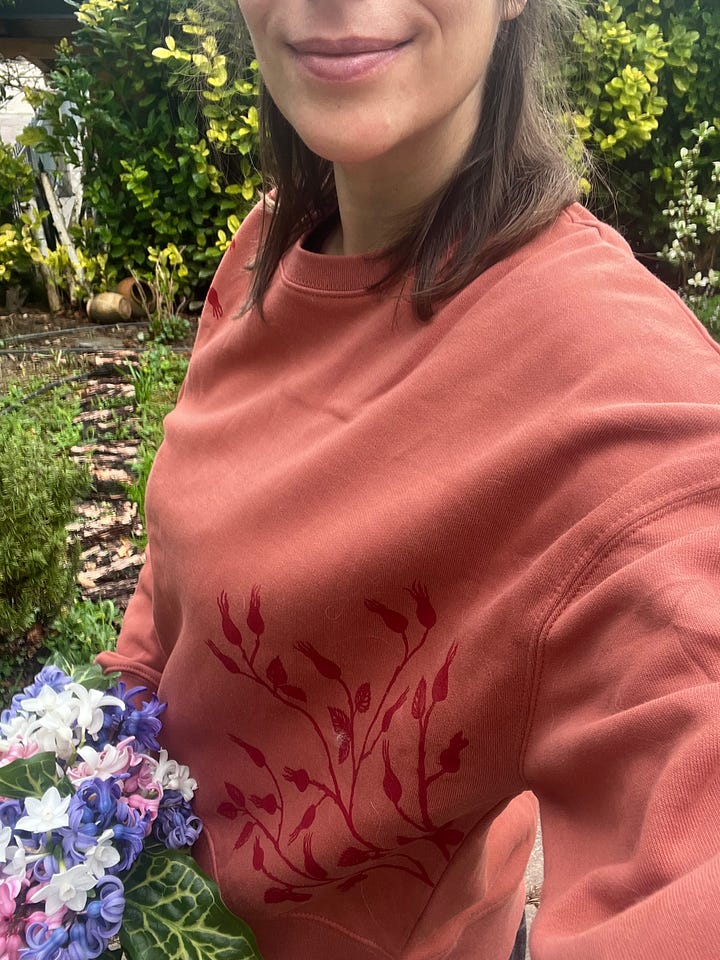
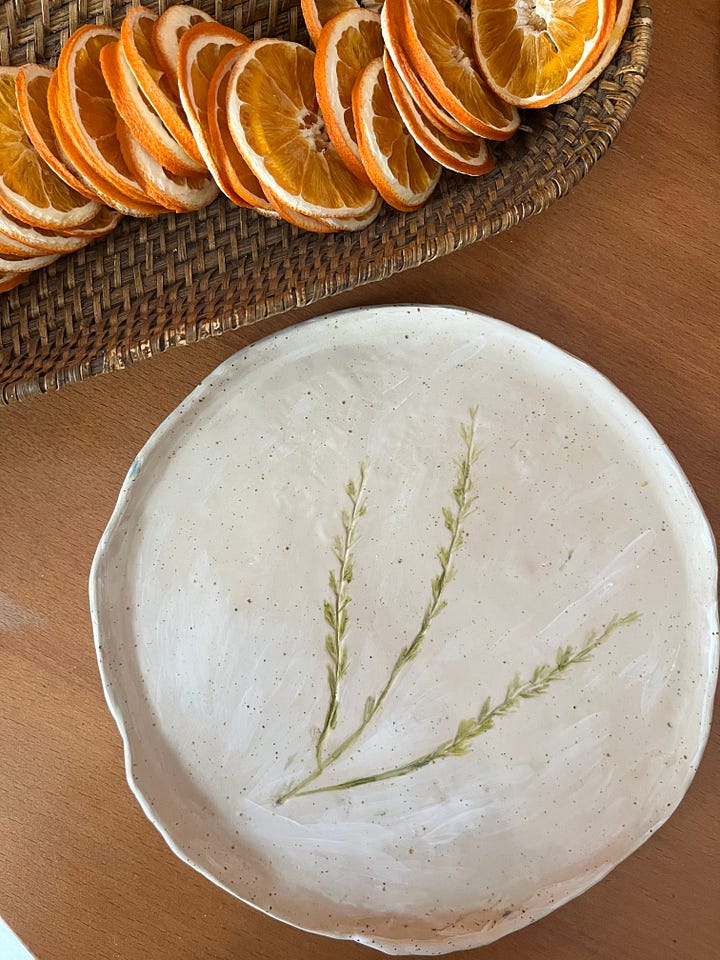
Moreover, I managed to score a beautiful plate for my mother from ARS Ceramicandi and a marvellous sweater handmade by Clarissa of BEKLA. ARS Ceramicandi is a pottery housed in Val di Non, and they also organise special events, classes and workshops. They brought ceramic cups to taste the wines used in the past and are almost forgotten nowadays - we have them in northern Portugal, for instance. Their ceramics are whimsical and delicate, and I enjoyed picking a couple of presents for home.
With Clarissa of BEKLA, we discussed the need to refocus consumption from fast fashion to handmade and conscious fashion. Her creations are beautiful and ethereal; she only works with certified materials and makers, and her designs are so beautiful I could not resist and had to wear the sweater I bought on the following day.
I also managed to contact an association, Coltivare Condividendo, that promotes the exchange of autochthonous seeds - which is controversial and constantly under attack while it should be one of the fundamental human rights: the right to feed oneself without having every year to buy seeds from proprietary manufacturers (the argument that seed producers need money for research can be counterbalanced by providing these public institutions with funding for research taking it away from, for instance, overpaying politicians, or buying weapons).
Fuori Vinifera: REIS-ISTENZE Alpine
Recovery, resistance, return.
On Sunday morning, three realities joined forces at the MUSE museum and explained how food, networking, and self-production can bring life back to the highlands.
Tasting of the first beer of the “Antagonisti” and a gastronomic ice cream created with ingredients from Liguria, Piedmont and Trentino.
The ice cream was made live on stage by Martina Francesconi of “Gelatina”, a Slow Food ice cream shop in Genoa, an expert in the creative recovery of ingredients and in the “Tempi di Recupero” network. The ice cream featured toasted rye from Enrico Ponza and his “mountain pirates”, are repopulating Melle (Valle Varaita, Piedmont) through “Officina Antagonisti”, a local brewery and restaurant.
The ry was cold infused in local milk from Trentino, topped with a syrup made with cirmolo infusion offered by Chef Juri Chiotti, a starred chef who returned to his roots in Valmala (CN) with “Reis-Cibo Libero di Montagna”, where he promotes self-production, wild herbs and zero waste.
If Enrico and Juri come from Piedmont, Martina, the ice cream crafter, chose Monte Baldo as her terroir and dusted the ice cream with nettle powder, a reminiscence from her childhood nettle harvest.
Finally, the ice cream was served with thin toasted rye and einkorn wheat bread, giving the crunchy component from a local breadmaker from the newly opened Fermenti bakery.
A network narrative of recovery time, radical choices, perseverance, and consistency: for them, stop thinking of food as something to be traded but start thinking about how it affects our lives.
It may not be a single restaurant with forty seats that changes the world, but a network of droplets makes the sea of change.
The mountain lifestyle here is explained in terms of how it creates community and, at the same time, how it changes the fate of a territory. It is a way of recognising the value of things through the experience that is made in their territory, creating an economy and supporting companies without territorial support.
And just like that, I registered as POP supporter of the association they are part of. I am now a proud new member of Tempi di Recupero!
One small droplet.
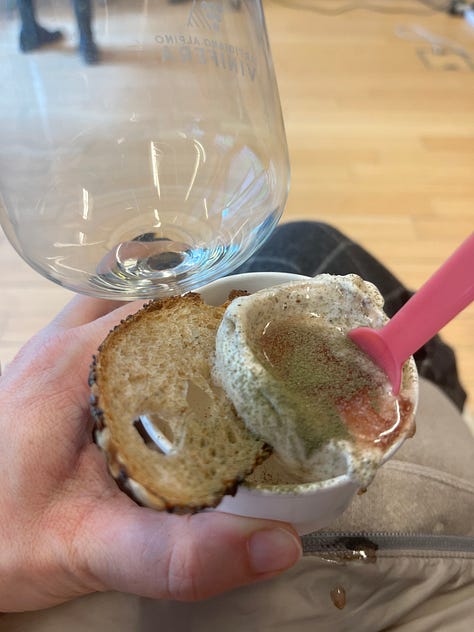
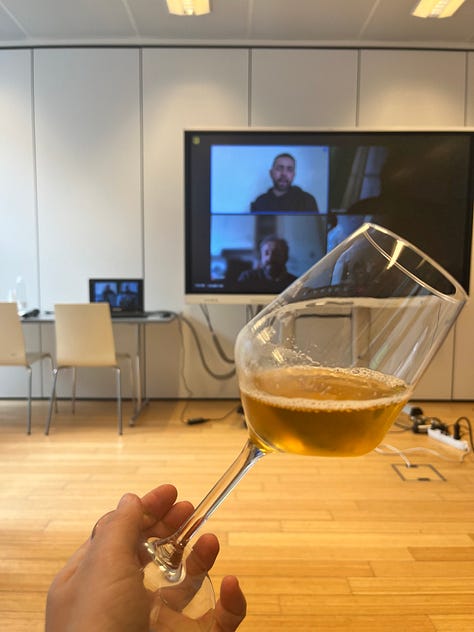
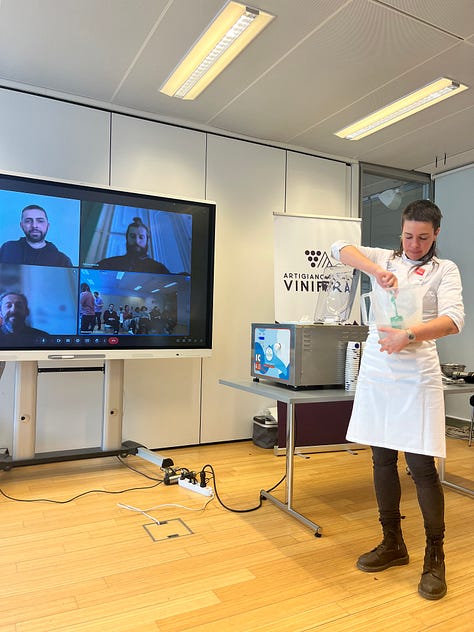
In previous editions…
Panificio Moderno - they were present during the Alti Due Ettari workshop, with a special bread they made on purpose with a heritage flour from Trentino, offered by a winemaker that is also growing wheat, and ground by the stone mills recovered by Mas del Gnac.
Maso Botes
Final Considerations
I have to say, Associazione Centrifuga - the organiser - was excellent in creating side events of enormous added value: from the wine masterclass with selected producers to this event in cooperation with MUSE Museum of Science, exploring the science of ice cream making and the mountain landscape infusing it with flavours but also with specific values.
I did not manage to visit all the stands I had in mind - with all the masterclasses I had signed up for; I had to prioritise and choose this time. But I now have an eye on them and can ensure I find ways to taste their products as soon as possible.
I hope Centrifuga will organise this kermesse in a similar format next year with ample space offered to food and alternative beverage producers.
Further Reading
Our colleague writer
last year wrote an entire chapter on Trento - if you are planning a visit, you can combine some of the info above with the wealth of information she provides.- writes on Memorie di Angelina about one of the typical dishes of the Trento region, tortél de patate, whereas describes canederli on his blog.
- on Sip with me thoroughly explains the beauty of Schiava I discussed above.





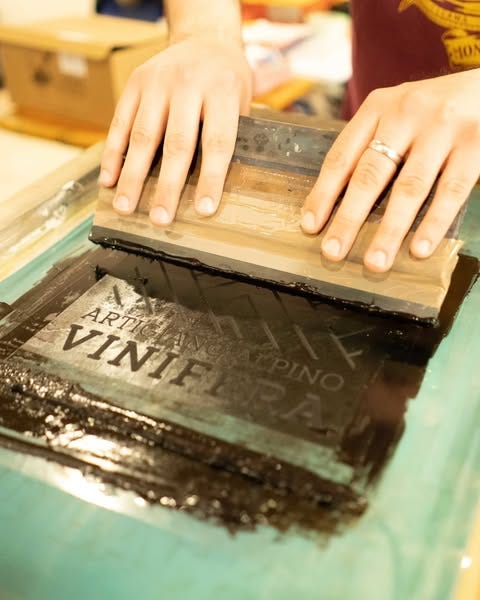

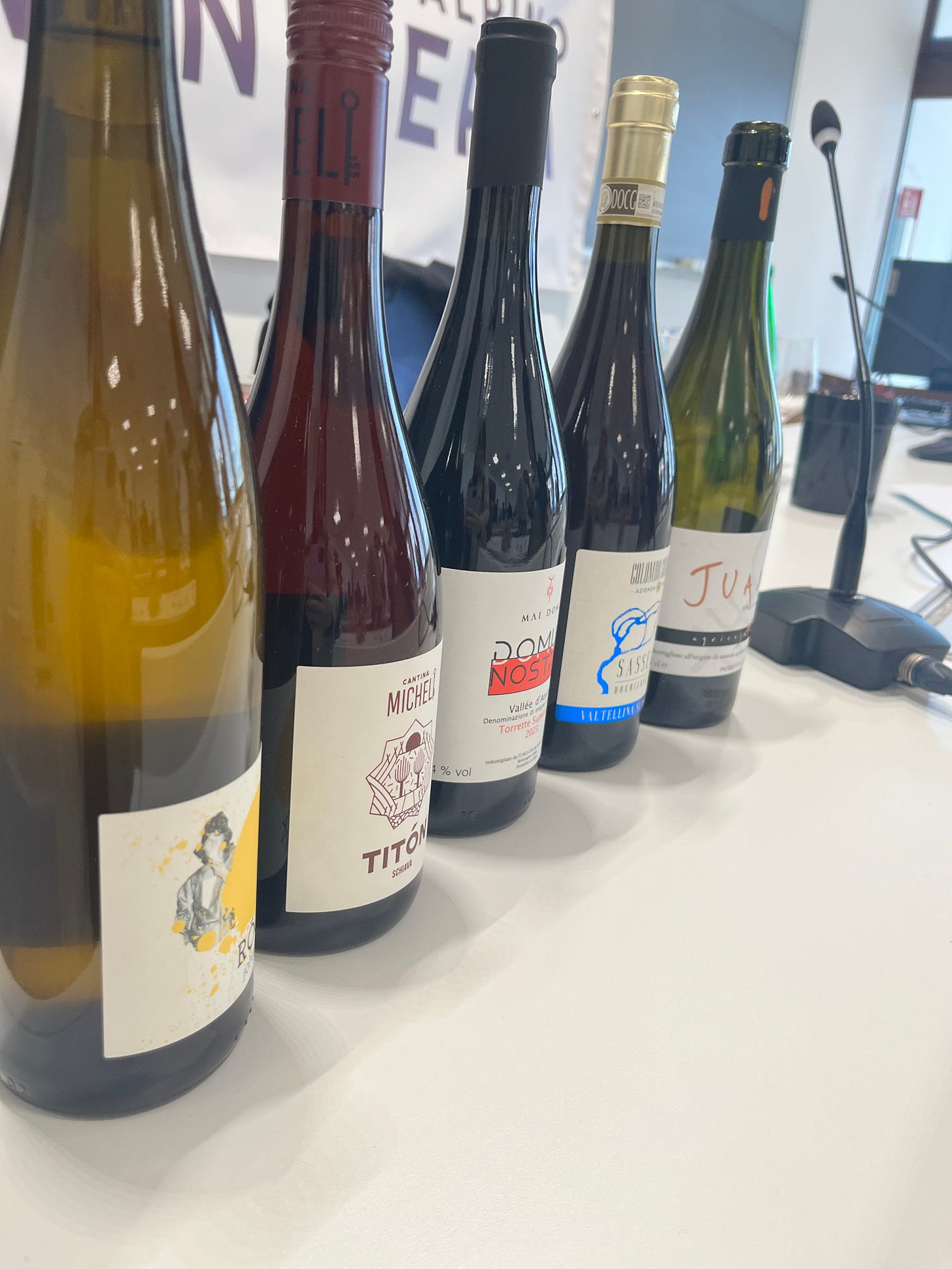


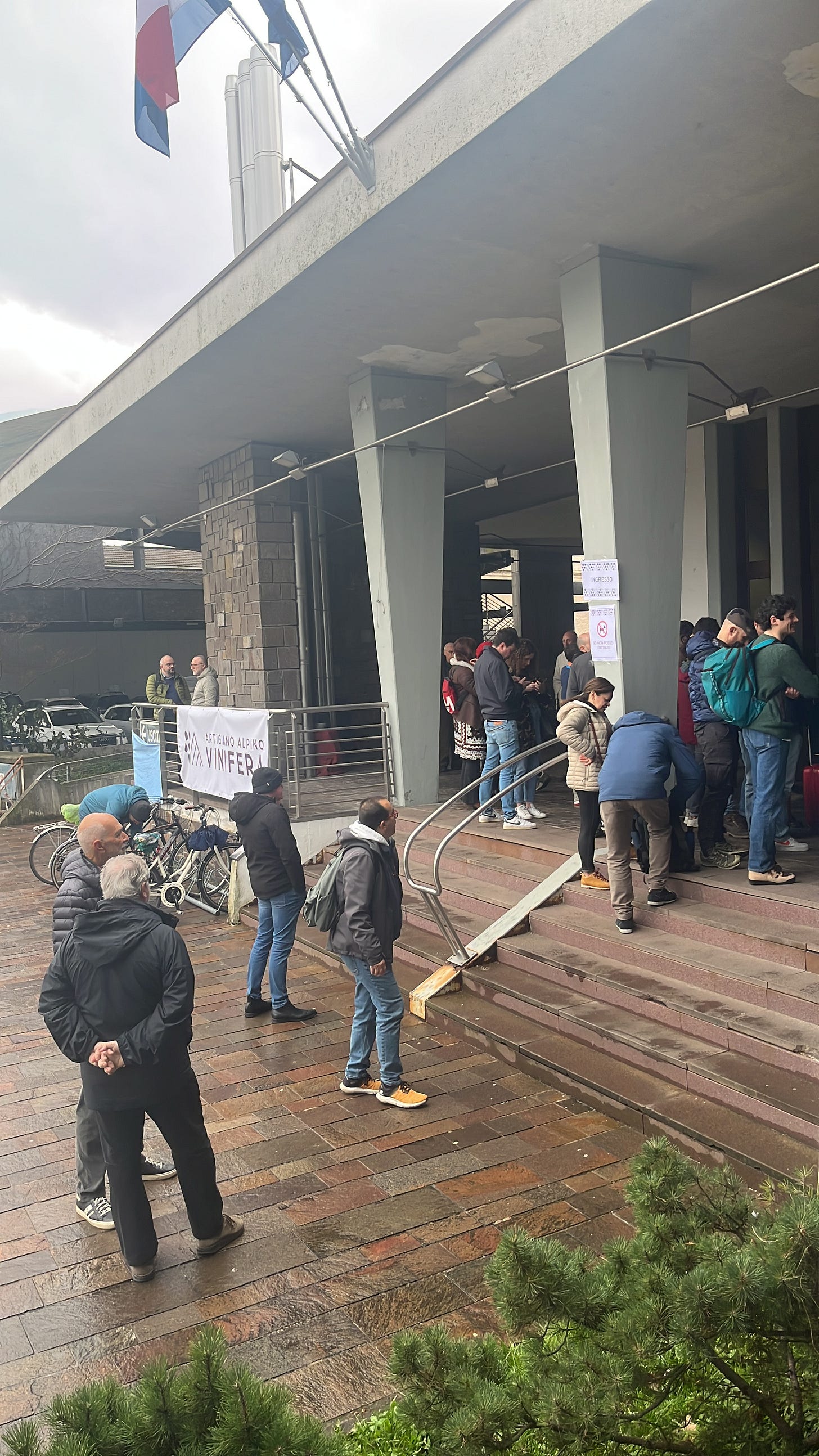
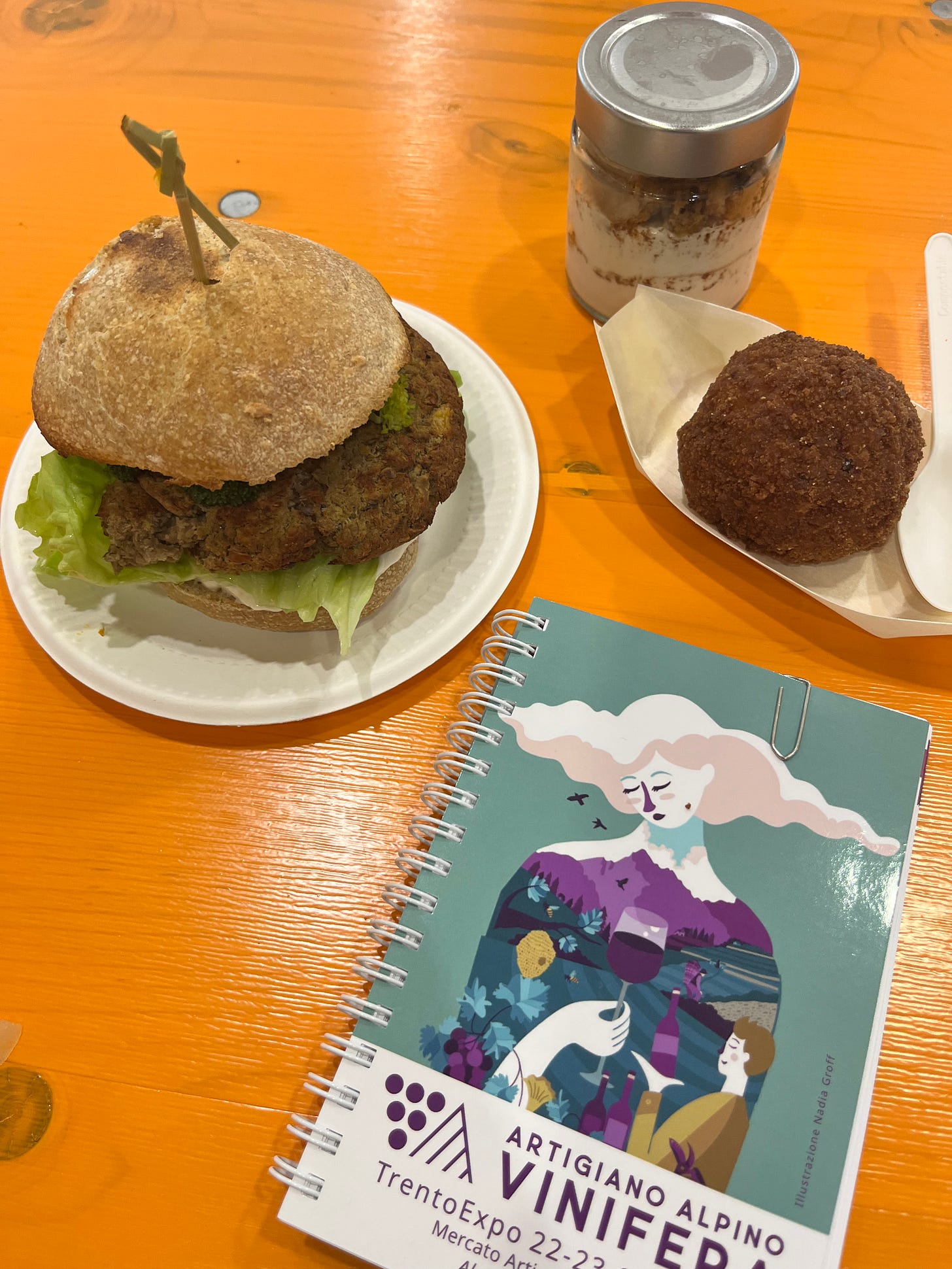



Mi stavo chiedendo se Vinifera fosse davvero un evento interessante ed ecco qui la risposta in tempo reale, grazie! (ma ho quasi skippato la parte dedicata all'alcol e a boy - o buoi? - ubriachi e mi immagino sudati.
p.s. Interessanti le pilloline di Biocol Labs, da provare. E il commento su Feral, che condivido. E sopratutto grazie per tutti i link sui sidri e foods, così vado a botta sicura!